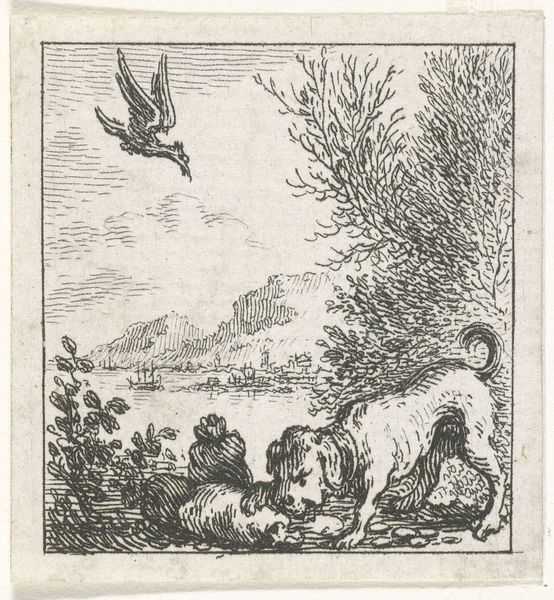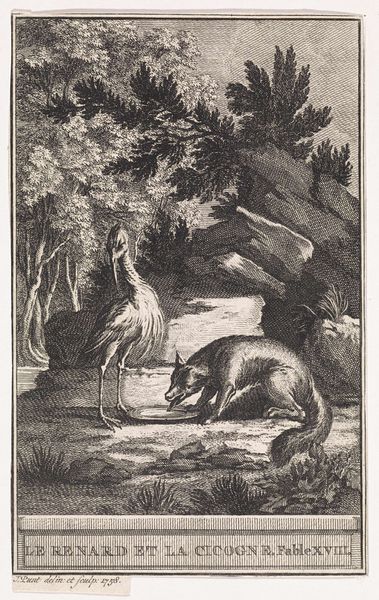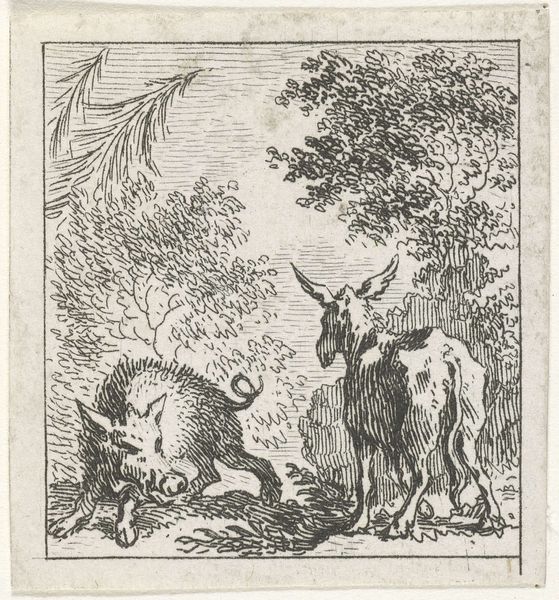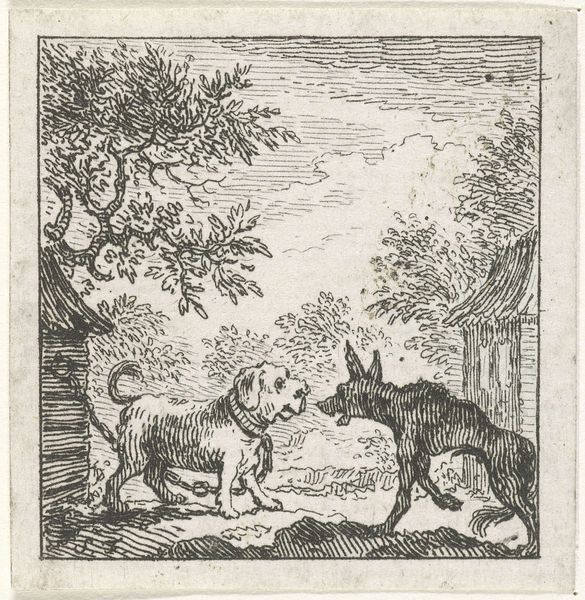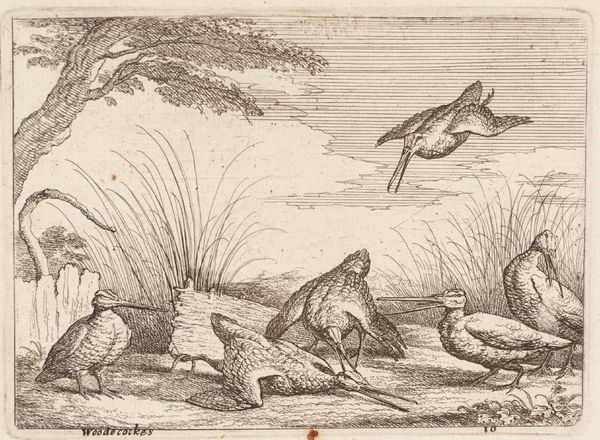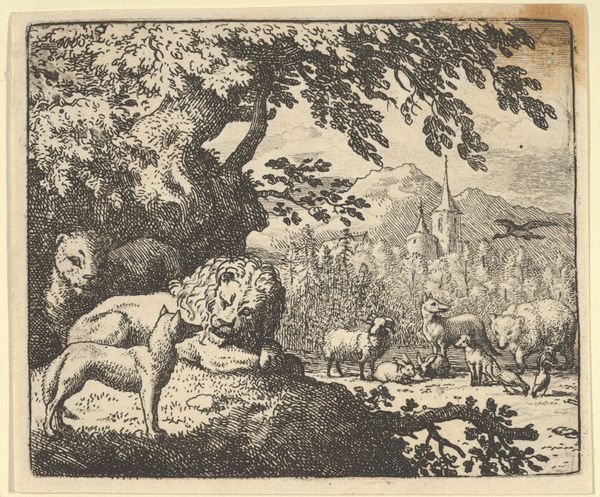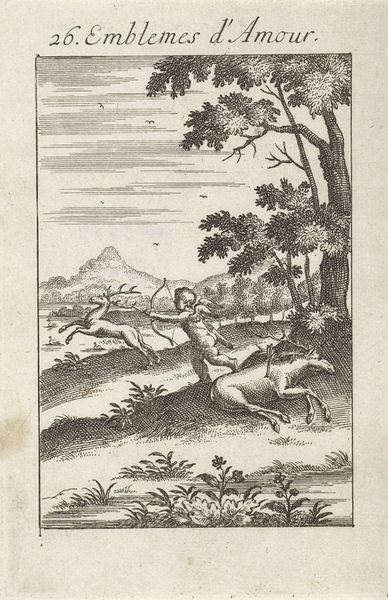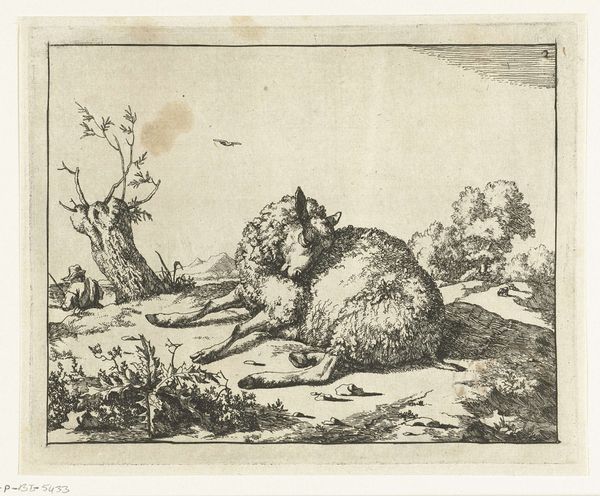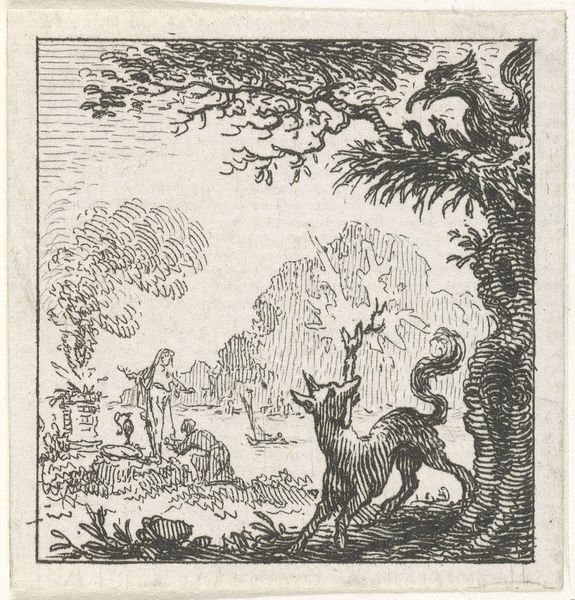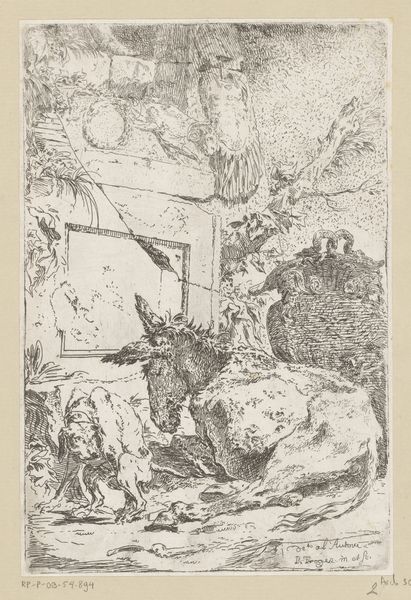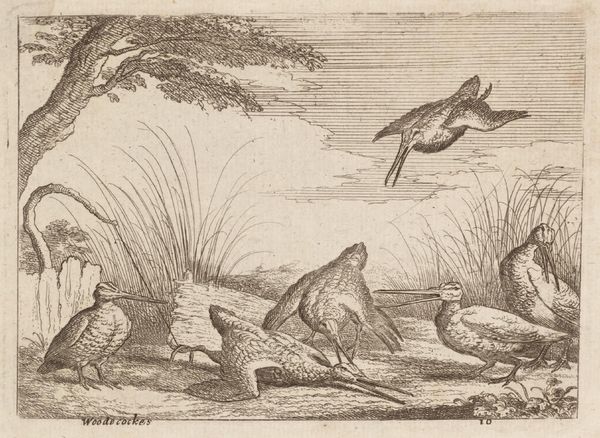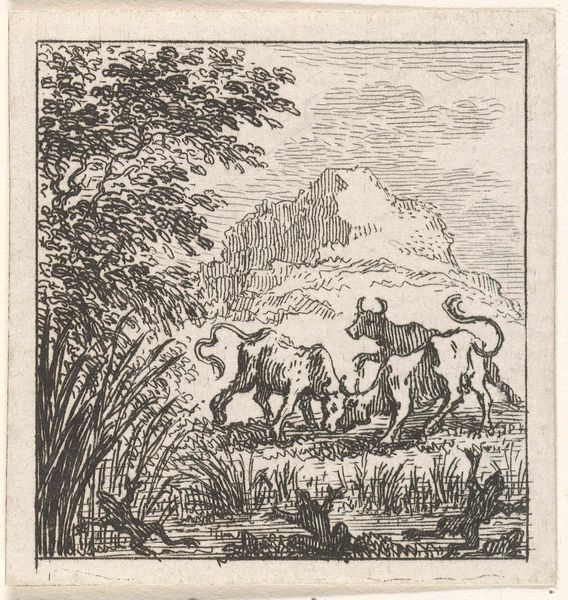
Dimensions: height 44 mm, width 41 mm
Copyright: Rijks Museum: Open Domain
Editor: Here we have Simon Fokke’s 1769 engraving, "Fabel van de hond en de krokodil," or "Fable of the dog and the crocodile." It’s such a contrast, the detail of the line work against this life-or-death drama playing out. How do you interpret this work? Curator: Well, the seemingly simple lines speak volumes. The image of a dog escaping a crocodile immediately sparks recognition, doesn’t it? This type of fable, often visually rendered, acts as a vessel carrying collective anxieties and moral lessons across generations. Editor: Anxieties? What kind of anxieties? Curator: Think of the cultural anxieties surrounding the exotic “other”—the crocodile representing unknown dangers lurking beyond familiar territories. Consider also the dog; is it simply fleeing danger, or does it represent the triumph of wit over brute force? The baroque style often played with contrasts – good and evil, reason and instinct. Editor: So, the choice of imagery conveys a larger message about the world. Do you see other examples of this messaging? Curator: Absolutely. Even the landscape—the sharp line of the reeds, the sketchy foliage—contributes to the atmosphere. Are we meant to feel a sense of claustrophobia? Is there an opportunity for the dog to change course and return another way? The scene is deliberately composed to provoke thought beyond a simple depiction of a chase. What's the nature of the relationship depicted here between nature and human society? The choice of certain exotic visual cues reinforces Europe’s cultural relationship with foreign peoples and lands. Editor: It’s interesting how something that seems so straightforward on the surface can have so many layers. I will look at baroque art through a different lens now. Curator: It all boils down to this continuous conversation, between ourselves, and those bygone cultures preserved through imagery. This type of symbolic visual language becomes its own repository, containing history, morality, psychology, and human behavior.
Comments
No comments
Be the first to comment and join the conversation on the ultimate creative platform.
